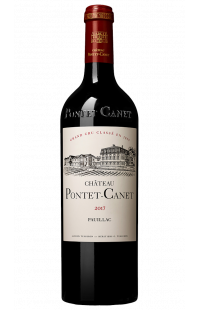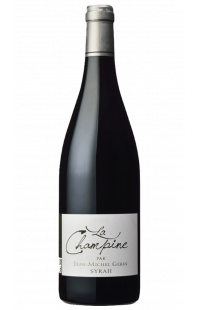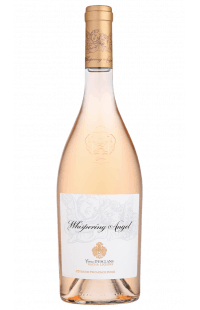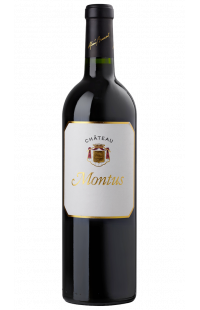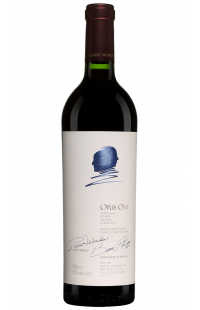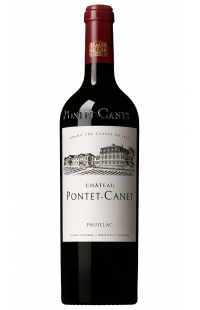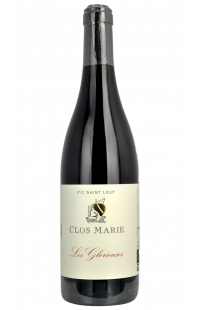- Menu
- All our wines
- Bordeaux
-
Rhône
-
Burgundy
-
Rosés Wines
-
Champagne
- France
-
World
- PRIMEURS
- ORGANIC WINES
Pic-Saint-Loup WInes
There are 3 products.
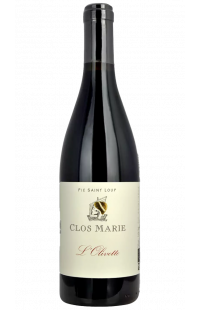
Available in
- Bottle (75cl)
- 23.90€ / bottleTASTING NOTES
Specifications
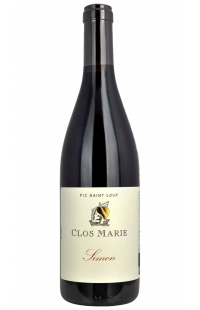
Available in
- Bottle (75cl)
- 33.00€ / bottleTASTING NOTES
Specifications
Pic-Saint-Loup Wines: A Journey to the Heart of Languedoc Terroirs
Discover the wines of the Pic-Saint-Loup appellation, located south of Montpellier, offering freshness and complexity through a unique terroir and traditional winemaking techniques.
Pic-Saint-Loup is more than just a wine appellation; it’s a true gem of the Languedoc, nestled amid breathtaking landscapes. Situated south of Montpellier, this vineyard is distinguished by its unique terroir and wines that capture the essence of this sunny region. Since 2017, Pic-Saint-Loup has enjoyed the prestigious Appellation d'Origine Contrôlée (AOC) status, a quality guarantee that attests to the authenticity and skill of local winemakers.
The appellation spans about 1,500 hectares, and though relatively small, it offers a diversity of red and rosé wines that reflect the richness of the region’s soils and climate. This terroir is particularly suited to grape varieties such as Syrah, Grenache, and Mourvèdre, which thrive in this exceptional setting. In this article, we will explore the world of Pic-Saint-Loup wines, delving into their history, characteristics, and why they deserve a place in your cellar.
History and Origins of the Pic-Saint-Loup Appellation
The Beginnings of Viticulture in Pic-Saint-Loup
The history of wine in the Pic-Saint-Loup region dates back to Roman times when the first vines were planted by Roman settlers. Located in the Languedoc region, this wine area has long been known for producing quality wines. Over the centuries, viticulture became deeply rooted in the local landscape, shaping both the terroirs and the culture and economy of the region.
Evolution to AOC: A Well-Deserved Recognition
Achieving AOC status in 2017 was the result of decades of hard work by Pic-Saint-Loup winemakers. This recognition bolstered the region’s reputation as a producer of exceptional wines. Before this accolade, Pic-Saint-Loup wines were classified under the Coteaux du Languedoc appellation, but the quality and uniqueness of the terroir justified an individual appellation, reflecting a distinctive identity and expertise.
Geography and Terroir of Pic-Saint-Loup
Geographic Location and Climatic Influences
Pic-Saint-Loup lies about 30 kilometers north of Montpellier in the Hérault department. The landscape is dominated by the mountain of the same name, rising to 658 meters, providing a stunning backdrop to the vineyards. The Mediterranean climate, characterized by hot, dry summers and mild winters, is moderated by continental and mountainous influences, creating a microclimate ideal for viticulture.
The cool nights, contrasting with warm days, allow the grapes to ripen slowly, enhancing aromatic concentration and preserving the grapes' natural acidity. These unique climatic conditions contribute to the characteristic expression of Pic-Saint-Loup wines.
Diverse Soils and Their Impact on Wines
The terroir of Pic-Saint-Loup is marked by a variety of soils, ranging from hard limestone and marl in the south to scree and clay-limestone soils in the north. This geological diversity allows winemakers to cultivate different grape varieties with varied yields, producing wines that reflect the terroir's complexity.
For instance, limestone soils are known for their moisture retention, essential during dry summers, while clay-limestone soils add structure and richness to the wines, especially reds. This diversity is a strength for the appellation, as it allows a wide range of wine styles, all while maintaining quality consistency.
Signature Grape Varieties of Pic-Saint-Loup
Syrah: The King of Pic-Saint-Loup
Syrah is the main grape variety in Pic-Saint-Loup, playing a central role in the identity of the appellation’s wines. This grape is particularly well-suited to the region's climate and soils. Syrah contributes intense aromas of black fruits, pepper, and licorice to the wines, as well as a tannic structure that gives them excellent aging potential.
Grown on the sunny hillsides of Pic-Saint-Loup, Syrah reaches optimal ripeness, resulting in powerful and elegant wines. The variations in altitude and exposure across the vineyards allow for aromatic nuances, producing cuvées with distinct profiles but always marked by freshness and a perfect balance.
Grenache and Mourvèdre: Essential Allies
Alongside Syrah, Grenache and Mourvèdre play crucial roles in creating Pic-Saint-Loup wines. Known for its roundness and high alcohol content, Grenache brings ripe red fruit notes and gentle spices, balancing the more austere structure of Syrah.
Mourvèdre, often planted on warmer soils, adds depth and complexity to blends. This grape variety is characterized by aromas of black fruits, leather, and forest floor, contributing to the wines' longevity. Together, these varieties form the backbone of Pic-Saint-Loup reds, offering a rich and complex aromatic palette.
Winemaking Methods in Pic-Saint-Loup
Traditional Winemaking: A Blend of Heritage and Modernity
Winemaking methods in Pic-Saint-Loup honor tradition while incorporating modern techniques to enhance the potential of the grape varieties. Manual harvesting is favored, allowing for rigorous grape selection to ensure quality. The grapes are then destemmed partially or entirely, depending on the desired wine style.
Fermentation takes place in concrete or stainless steel vats, allowing for precise temperature control to preserve the aromas' freshness. Malolactic fermentation is often carried out to soften the wines' natural acidity, adding a rounder texture on the palate.
Carbonic Maceration: A Technique to Enhance Aromas
Although less common, some Pic-Saint-Loup winemakers use carbonic maceration to create intensely aromatic, fruity wines. This technique involves fermenting whole grape clusters in a carbon dioxide-saturated vat, allowing for intracellular aroma extraction.
This method produces wines with soft tannins and fresh, vibrant red fruit aromas, ideal for young consumption. It’s a contrasting approach to traditional winemaking, showcasing the appellation’s diverse styles.
Barrel Aging: Seeking Balance and Complexity
After fermentation, Pic-Saint-Loup wines are often aged in oak barrels for twelve to twenty-four months. This aging process helps structure the wines, adding subtle woody notes and softening the tannins. French oak barrels impart aromas of vanilla, toast, and coconut that harmonize with the fruity and spicy notes of the grape varieties.
Barrel aging is an art requiring perfect mastery of timing and wood types to avoid overpowering the wine's natural aromas. The result is a complex, deep, and balanced wine that can age in the bottle for many years.
The Cuvées of Pic-Saint-Loup
Red Wines: Intense Terroir Expression
Pic-Saint-Loup red wines embody the purest expression of the terroir and grape varieties. With a deep, dark color, they reveal a rich and complex nose, blending black fruit, spice, and garrigue aromas. On the palate, these wines are distinguished by their tannic structure, freshness, and length.
Pic-Saint-Loup reds are often crafted for aging, with aging potential allowing for aromatic evolution over the years. They pair well with red meats, game, and aged cheeses.
Rosé Wines: Freshness and Elegance
Though less well-known than the reds, Pic-Saint-Loup rosés offer a refreshing and elegant alternative. Made primarily from Syrah and Grenache, these wines are characterized by fresh red fruit aromas like strawberry and raspberry, complemented by delicate floral notes.
On the palate, they are lively and light, with a lovely acidity that makes them especially suited to hot, sunny days. Pic-Saint-Loup rosés are perfect with salads, grilled fish, or enjoyed as an aperitif.
Characteristics of Pic-Saint-Loup Wines
Aromatic Profile: Perfect Balance Between Fruit and Freshness
Pic-Saint-Loup wines stand out for their complex and balanced aromatic profile. Reds are often characterized by ripe black fruit, pepper, spice, and garrigue aromas, while rosés enchant with fruity and floral notes.
Freshness is a hallmark of Pic-Saint-Loup wines, thanks to the altitude of the vineyards and cool nights that preserve grape acidity. This freshness translates on the palate as liveliness that balances aromatic richness, offering powerful and elegant wines.
Aging Potential: Wines That Stand the Test of Time
Pic-Saint-Loup wines, especially the reds, have excellent aging potential. Grape varieties like Syrah and Mourvèdre, combined with carefully managed barrel aging, yield wines that can mature for several decades. Over time, the aromas evolve into more complex notes of forest floor, leather, and tobacco, while the tannins soften for a velvety texture.
These wines can be stored in a temperature-controlled cellar, shielded from light, to fully appreciate their evolution. They are ideal for wine lovers who enjoy discovering how a wine can transform and gain complexity with age.
FAQs on Pic-Saint-Loup Wines</h3 >
What makes Pic-Saint-Loup unique? Pic-Saint-Loup stands out for its varied terroir, Mediterranean climate, and signature grape varieties like Syrah, which contribute to wines of great freshness and complexity.
What is the dominant grape in Pic-Saint-Loup? Syrah is the main grape variety in Pic-Saint-Loup, often blended with Grenache and Mourvèdre to create balanced and aromatic reds and rosés.
How should Pic-Saint-Loup wine be stored? Pic-Saint-Loup wines should be kept in a cool, dark place with controlled humidity, ideally between 12 and 15°C, to preserve their aging potential.
Are all Pic-Saint-Loup wines organic? Many Pic-Saint-Loup estates adopt organic or biodynamic practices, but not all are certified. It’s essential to check labels or ask producers directly.
What are the best food pairings for Pic-Saint-Loup wines? Pic-Saint-Loup reds pair well with red meats, saucy dishes, and aged cheeses, while rosés are ideal for summer dishes, salads, and grilled foods.
Where can I taste Pic-Saint-Loup wines? You can taste Pic-Saint-Loup wines directly at the estates, during tours, organized tastings, or at wine fairs and events.
Conclusion
Pic-Saint-Loup is a rich appellation in history and diversity, where the unique terroir and winemakers' expertise create exceptional wines. Whether you prefer powerful reds or elegant rosés, Pic-Saint-Loup wines deserve a place in your cellar. Their freshness, complexity, and aging potential make them ideal companions for various dishes, reflecting the authenticity and passion of Languedoc winemakers. Don’t hesitate to explore this appellation to discover wines that embody the essence of the Mediterranean terroir.
